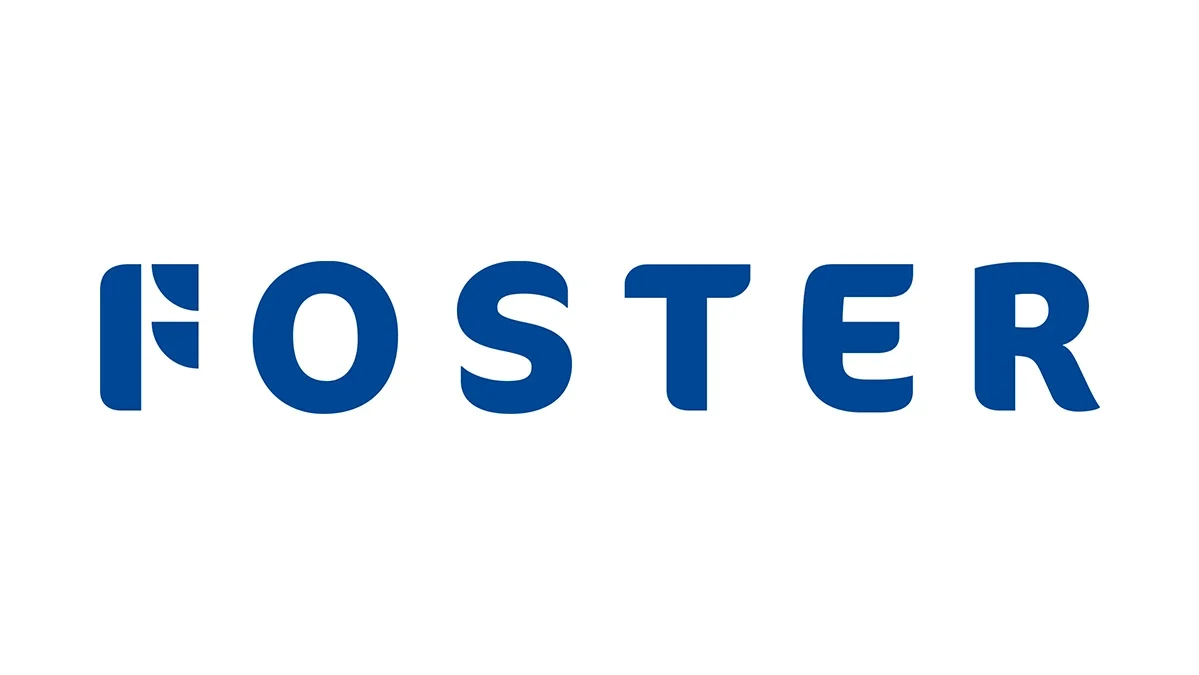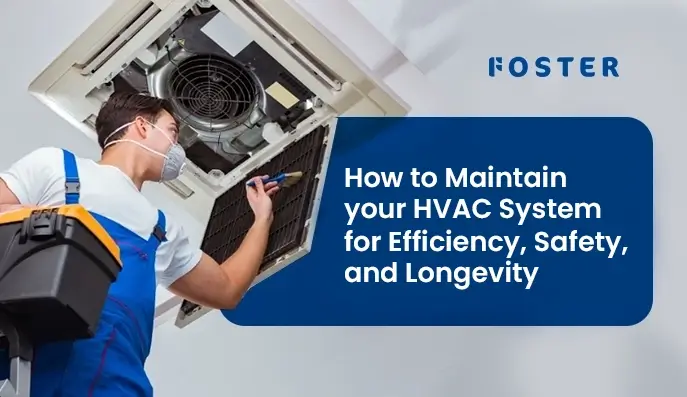Your HVAC system works day in and day out to keep your facility comfortable, but when was the last time it got the attention it needed? Without regular preventive maintenance, even the best high-performance systems deteriorate in efficiency, consume excess energy, and are prone to surprise breakdowns, disrupting operations.
According to research, well-maintained HVAC systems can save energy consumption by 10-20% and cut up to 60% of the energy usage by fans. Translate this into cost savings and extended equipment life for facility managers and property owners.
This comprehensive guide takes you through everything related to HVAC preventive maintenance, from daily tasks to seasonal tune-ups, complete with a downloadable checklist and expert insights for 2025.
What Is HVAC Preventive Maintenance?
HVAC preventive maintenance involves the periodic inspection, cleaning, and servicing of heating, ventilation, and air conditioning systems to prevent failures before they occur. Unlike reactive repairs that address problems after they happen, preventive maintenance identifies and resolves minor issues early, saving time, money, and stress. Understanding what HVAC services include is the first step toward building an effective maintenance strategy.
A comprehensive preventive maintenance program includes:
- Regular checking of all system components
- Cleaning of filters, coils, and drain lines
- Testing of controls, thermostats, and safety features
- Lubrication of moving parts
- Calibration of sensors and controls
- Documentation of all findings and repairs
Many facility managers find success by partnering with professionals through HVAC annual maintenance contracts, which provide scheduled service and priority support when issues arise.
Why HVAC Preventive Maintenance Matters
The advantages of regular HVAC maintenance go way beyond preventing breakdowns. According to the U.S. Department of Energy, proper maintenance is essential for ensuring efficient operation. Here’s what proactive care delivers:
Dramatic Energy Savings
Clean systems operate more efficiently. Studies confirm that regular maintenance reduces energy consumption by 10-20%, with some components showing even greater improvements. Clogged filters and dirty coils force your system to work harder, driving up utility costs month after month. This becomes especially critical as new SEER2 efficiency standards take effect in 2025, requiring minimum efficiency ratings of 14.3 to 15 SEER2 depending on your region.
Extended Equipment Lifespan
Annual maintenance can double the remaining life of HVAC equipment. Regular tune-ups reduce wear on critical components like compressors, motors, and heat exchangers—parts that are expensive to replace.For comprehensive coverage, consider establishing a structured HVAC maintenance contract that keeps your equipment in peak condition year-round.
Fewer Emergency Breakdowns
The worst time for your HVAC to fail is during extreme weather. Preventive maintenance catches issues, such as worn belts, refrigerant leaks, and electrical problems, before they cause system-wide failures. Learning why HVAC maintenance is important helps you understand the full scope of benefits beyond simple repairs.
Better Indoor Air Quality
Your HVAC circulates air throughout your entire facility. Clean filters and components reduce dust, allergens, mold, and bacteria, making for a much healthier environment for occupants. The EPA’s indoor air quality guidelines emphasize the critical role HVAC systems play in maintaining healthy indoor environments. Discover more strategies for improving indoor air quality with your air conditioning system.
Warranty Protection
Most HVAC manufacturers call for routine professional maintenance to keep the warranty valid. Skipping maintenance could void your coverage when you need it most. This is another reason why selecting the right service partner matters—learn how to choose an HVAC contractor who can properly document and maintain your system.
Lower Operating Costs
Preventive maintenance is much cheaper than emergency repairs or the premature replacement of equipment. Organizations save 5-20% annually on energy bills through proper operations and maintenance practices.
Essential HVAC Maintenance Tasks
Monthly Checklist
Perform the following every 30 days to maintain system health:
☑ Check filters monthly and replace every 1-3 months depending on usage and environment. A dirty filter restricts airflow and reduces efficiency by as much as 15%. According to ASHRAE standards, regular filter maintenance is fundamental to system performance.
☑ Thermostat Function Test Check your thermostat to ensure that it responds appropriately and holds set temperatures. Smart thermostats may require firmware updates.
☑ Airflow Verification Check that all vents and registers have proper airflow. The system works harder if vents are blocked or closed.
☑ Unusual Noise Detection Listen for the grinding, squealing, or rattling sounds, which signal mechanical issues.
☑ Visual Inspection Check for visible wiring, connections, and components for any sign of wear or damage.
☑ Outdoor Unit Clearance Remove debris, leaves, and vegetation within 2 feet of the outdoor units to allow proper airflow.
Quarterly Maintenance Tasks
Add these deeper inspections every three months:
Indoor Unit Cleaning Use a vacuum to clean those parts of the indoor unit that are accessible, including blower fans and areas around them.
☑ Condensate Drain Pan Check Check drain pans for standing water. Clean thoroughly to avoid mold growth and water damage by ensuring proper drainage.If you’re unsure about drainage, consult guides on where to run AC condensate drain lines for optimal setup.
☑ Lubricate Moving Parts Apply the manufacturer-recommended lubricant to motors, bearings, and other moving parts to reduce friction and avoid premature wear.
☑ Refrigerant Level Check refrigerant levels and look for signs of leaks. Low refrigerant reduces cooling capacity and may also damage the compressor.
Seasonal HVAC Maintenance
Spring/Summer Preparation (Cooling Season)
□ Professional AC Tune-Up Schedule service before peak cooling demand begins.
□Clean Condenser Coils Remove dirt and debris from outdoor coil surfaces for optimum heat transfer.
□ Check Refrigerant Levels Test pressure and check for leaks using professional gauges.
□ Test Cooling Operation Run a full cooling cycle and measure temperature differentials.
□Inspect Ductwork: Look for leaks, blockages, or disconnected sections that waste cooled air.
□Check Condensate Drain Lines Clear blockages and treat with algaecide to prevent clogs.
□ Calibrate Thermostat Ensure accurate temperature readings and proper system cycling.
Fall/Winter Preparation (Heating Season)
Professional Heating Tune-Up Schedule service before cold weather arrives.
□ Furnace Burners Check the burner for cleanliness and ensure proper combustion and color of flame
□Test Heat Exchanger Check for any signs of cracks or corrosion that could result in carbon monoxide leaks.
□Carbon Monoxide Detector Test Check all detectors to ensure they are operable and batteries are fresh
□ Humidifier Maintenance Clean or replace humidifier filters and pads to prevent mold.
□ Test Safety Controls Verify high-limit switches, pressure switches, and flame sensors operate correctly.
□ Inspect System Insulation Check ductwork insulation and seal any gaps to prevent heat loss.
Annual Professional Maintenance
Once per year, have a licensed HVAC technician do the following:
□ Comprehensive System Inspection Complete evaluation of all components, controls, and safety devices.
□Electrical Connection Testing Tighten connections, measure the voltage and amperage, check for overheating.
□ Motor and Blower Assessment Test motor performance, check bearings, measure airflow.
□Duct System Evaluation Professional inspection for leaks, blockages, and efficiency losses.
□ Energy Efficiency Audit Analyze system performance and identify opportunities to improve.
□ Documentation Update Record all findings, measurements, and recommendations in your maintenance log.
Tools and Software for Modern HVAC Maintenance
Below are some of the ways facility managers will use digital solutions to handle HVAC maintenance in 2025:
Computerized Maintenance Management Systems (CMMS)
Cloud-based CMMS platforms offer:
- Automated Scheduling: Never miss maintenance tasks with smart reminders
- Work Order Management: Track all service requests from creation to completion
- Historical Data: View full maintenance history to inform decisions.
- Mobile Access: Field technicians can update tasks in real time from any device.
- Predictive Analytics: Identify patterns and prevent failures before they occur
Smart Thermostats and IoT Devices
Modern HVAC controls provide:
- Real-time performance monitoring
- Energy consumption monitoring and reporting
- Remote adjustments and troubleshooting
- Integration with building management systems
- Automated anomaly alerts
Signs Your HVAC System Needs Immediate Attention
Don’t wait until you have a complete failure. Call a professional if you find:
- Unexplained Energy Bill Increases Sudden spikes in utility costs are often indicative of efficiency problems.
- Inconsistent Temperatures Hot and cold spots indicate problems with the ductwork, thermostat issues, or an imbalanced system.
- Excessive Noise or Vibration: Unusual sounds generally denote loose component issues, bearing failures, or motor problems.
- Frequent Cycling Short-cycling reduces efficiency and points to root causes.
- Poor Air Quality Increased dust, odors, or humidity indicate there is a problem with filtration or ventilation. Learn more about how to improve indoor air quality through proper HVAC maintenance.
- Visible Moisture or Leaks Water leakage around indoor units or refrigerant leakage calls for urgent action.
DIY vs. Professional Maintenance: What You Need to Know
Tasks Homeowners Can Handle
- Monthly filter changes
- Clearing debris from outdoor units
- Basic thermostat checks
- Visual inspections
- Keeping vents unobstructed
Tasks That Require Professional Service
- Refrigerant handling (EPA certification required
- Electrical testing and repairs
- Gas line inspections
- Duct sealing and repairs
- Complex diagnostics and calibration
Trying to do complicated repairs without training can:
- Void equipment warranties
- Create safety hazards
- Cause more damage
- Violate local codes and regulations
Trying to do complicated repairs without training can void equipment warranties, create safety hazards, cause more damage, and violate local codes and regulations. This is why choosing the right HVAC contractor with proper certifications is essential.
HVAC Maintenance for Extreme Climates
In regions with extreme conditions, like the UAE and other Gulf states, HVAC systems are under increased stress:
Hot Climate Considerations
- More frequently changing of the filter owing to dust and sand.
- Monthly coil cleaning during peak seasons
- Improved attention to the cooling system components
- Regular refrigerant level monitoring
- Shaded outdoor units when possible
Cold Climate Considerations
- Inspections for Cracks in Heat Exchangers
- Regular Combustion Safety Checks
- Carbon monoxide monitoring
- Snow and ice clearance from outdoor units
- Proper system winterization
Creating Your HVAC Maintenance Plan
Set up an effective maintenance program in the following way:
Step 1: Document Your Systems
- Create detailed records including:
- Equipment make, model, and serial numbers
- Installation dates and warranty information
- Manufacturer maintenance schedules
- Service history and repair logs
Step 2: Set a Schedule
- Based on manufacturer recommendations and usage patterns, create a calendar for:
- Monthly inspections
- Quarterly tasks
- Seasonal preparations
- Annual professional service
Step 3: Choose Your Service Provider
- Choose an HVAC contractor based on the:
- Proper licensing and insurance
- Manufacturer certifications
- Customer reviews and references
- Response time guarantees
- Maintenance agreement options
Understanding what HVAC services should be included helps you evaluate potential service providers effectively.
Step 4: Monitoring and Adjusting
- Monitor your program’s effectiveness by tracking:
- Energy consumption trends
- Repair frequency and costs
- System performance metrics
- Indoor comfort and air quality
Final Thoughts: Make Maintenance a Priority
Regular preventive HVAC maintenance isn’t an optional expense; it’s a key strategic investment in performance for your facility and your occupants, as well as in your bottom line. The cost of proactive maintenance pales when compared to emergency repairs, energy waste, and premature equipment replacement.
In extreme climates, such as in the Middle East, where HVAC systems work under acute stress, the advantages of regular maintenance multiply. A well-maintained system delivers:
Ensure energy savings of 10-20% Extend the useful life of your equipment Decrease indoor air pollutants Reduce frustrating breakdowns Comfort all year round
Start putting your preventive maintenance program into practice today..Use our checklist and seasonal tips to take the guesswork out of HVAC maintenance. And if you’re unsure about any task, always consult a licensed HVAC technician- Foster International.



 Previous Post
Previous Post


